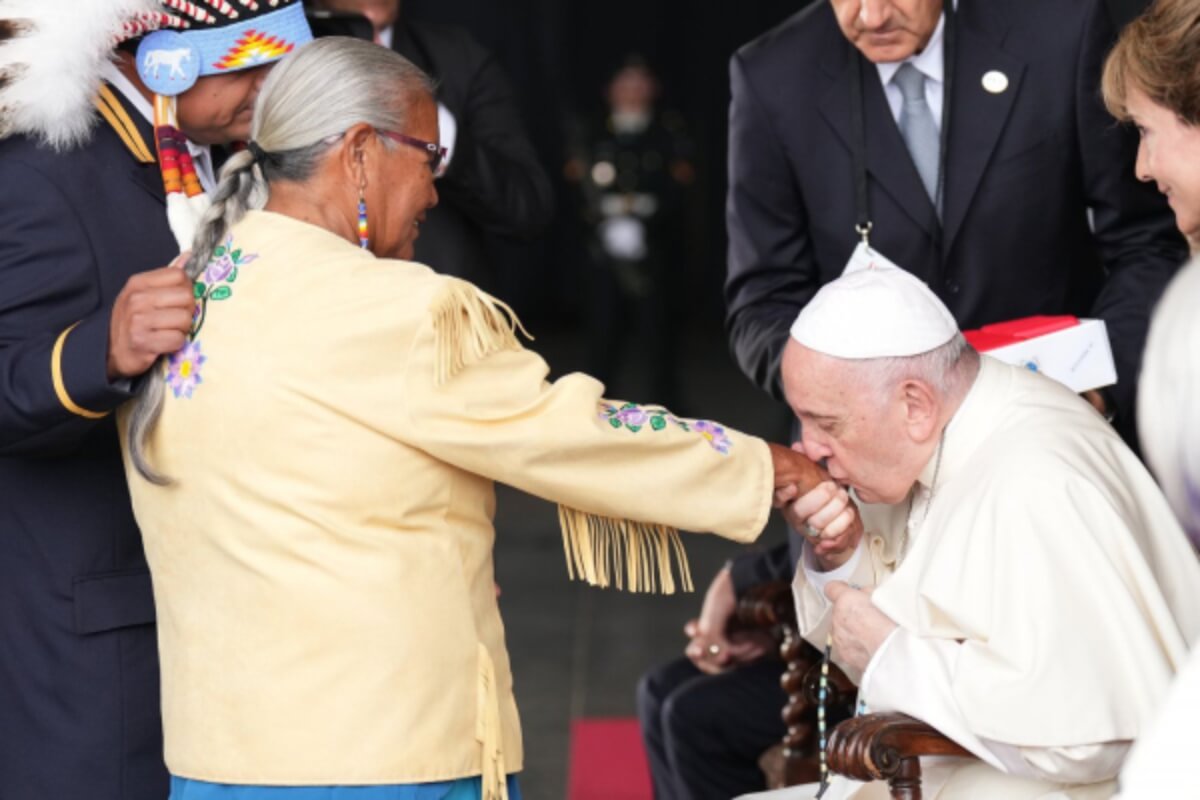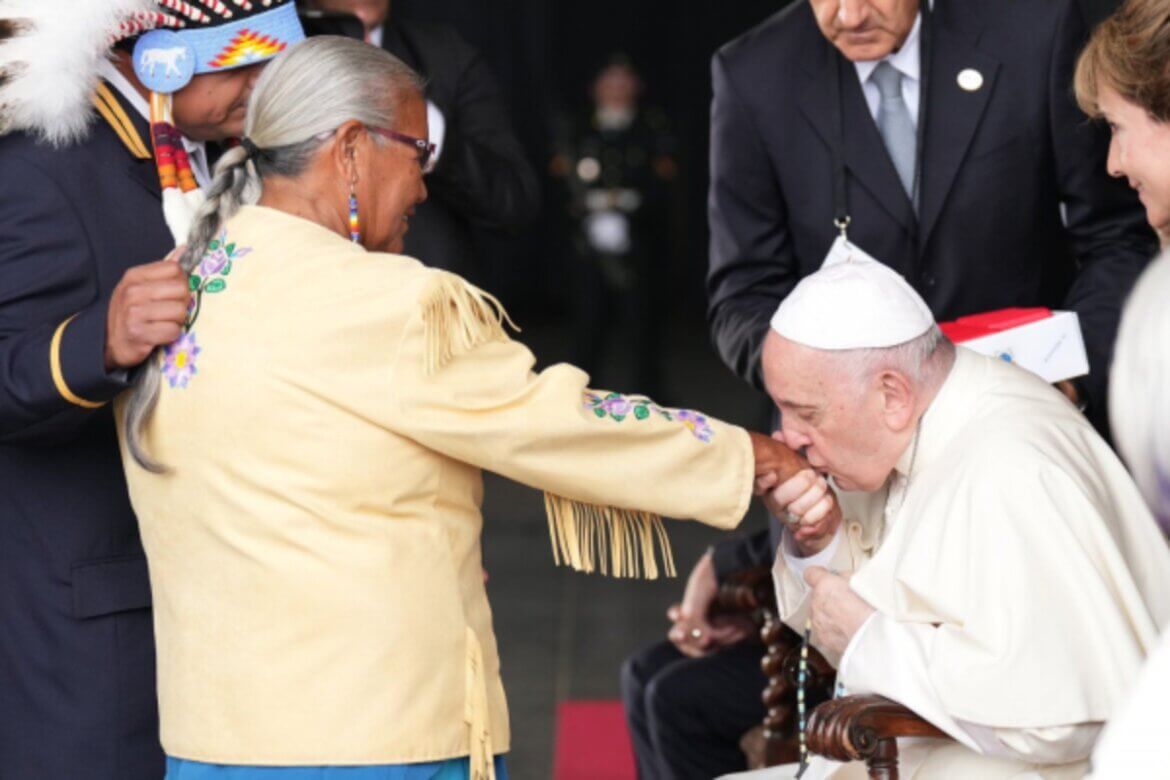The Pope’s Visit Highlights His Gift for Meaningful Engagement
Michael W. Higgins
Volume 37 Issue 7, 8 & 9 | Posted: October 7, 2022

No previous papal visit has been like it. When John Paul II first alighted on our shores in 1984, his travel across the country was akin to a Roman triumph: massive and adoring crowds, church and state pomp of the highest order, a festive atmosphere sometimes accompanied by a populist frenzy. And it was media saturation.
When John Paul came back for a quick visit to Fort Simpson in 1987 to honour a promise to the Indigenous peoples of the North, it was a quiet moment, a pledge fulfilled, sans controversy. But when he arrived for World Youth Day in 2002 – his final visit – the excitement was muted. He was seriously impaired by illness: It was an ecclesiastical rock star event without an invigorating, crowd-pleasing star.
The “penitential pilgrimage” of Pope Francis is in stark contrast with all three of his predecessor’s Canadian journeys. And for me, the most important by far.
Pope Francis came to Canada because he was invited to do so at a critical juncture in church and national history; he came to Canada because he heard in his heart the cries of the suffering and because he felt great humiliation and indignation. He came because he had to.
His time in Canada – July 24 to 29 – has also been a pilgrimage of pain, a chronicle of remorse, a litany of shame. The history of the Catholic Church’s role in administering residential schools, its complicity in a national strategy to eradicate Indigenous culture through the suppression of language and spirituality, its willing participation in a program of family-shattering and inter-generational trauma, have all been in the public court for years.
And unlike other churches, the Roman Catholic Church in Canada dragged its feet on many accountability issues, falling short on some of its financial commitments, sidestepping the Truth and Reconciliation Commission Report Call to Action #58 that expressly asked for the Pope to come to Canada to issue an apology.
And then came the Kamloops Indian Residential School unmarked graves exposé in the spring of 2021 and all was altered – irrevocably.
Pope Francis’s time in Canada has all the hallmarks of his gift for meaningful human encounter. He has apologized several times – although debate over the comprehensiveness of these apologies has not abated – and he has personalized the interactions with Indigenous leaders by being present to them outside script and protocol.
The two most powerful moments for me – and I have covered many papal occasions over the years – were Pope Francis’s simple human gestures of engagement. Not the photo ops with the Prime Minister and Governor-General, but kissing the hand of Alma Desjarlais and returning a child’s moccasins he had been given in Rome by former chief Marie-Anne Day Walker-Pelletier, fulfilling his promise to bring them back with him.
Expectations for this visit were high and Pope Francis knew that he was being dropped into a vortex of demands, conflicting political and religious pressures, and gruelling schedules. But he successfully and adroitly avoided being caught up in the politics swirling about him; he remained focused on the mission at hand, a mission of contrition and not facile appeasement. He came to ask forgiveness, to stay firmly rooted on the path to reconciliation, to acknowledge the consequences that must flow from addressing a deplorable legacy with its “burden of failure.”
Pope Francis knows the power of silence, especially its curative potential. Of course, his visit was in many ways a cascade of words and relentless activity – masses and other liturgies, speeches, formal conversations, homilies, baby-kissing – but the solemn moments at a cemetery, the prayerful disposition in a wheelchair, the sacred time for recollection, define this Pope’s pastoral approach beyond words.
As outrageous as it may sound, given the din created around the demands to revoke papal bulls that have in fact long since been abrogated and given the reactions of many survivors and their families to apologies that they deem insufficient, Pope Francis remained focused on creating a momentum of tenderness.
He knew, as that very Catholic Southern Gothic novelist Flannery O’Connor knew, that when tenderness among Christians is just theory “cut off from the person of Christ … its logical outcome is terror.” To be tender is to be accountable, to be present to the “other,” to reverence the “other.”
Only genuine Christian witness can counter the culture of contempt that marks our residential schools legacy. Pope Francis knows that in his bones as much as he knows that a true pilgrimage of repair must originate among Canadian Catholics – clerics and lay – and that the Bishop of Rome is but one player in an historic unfolding of truth and reconciliation.
Michael W. Higgins

